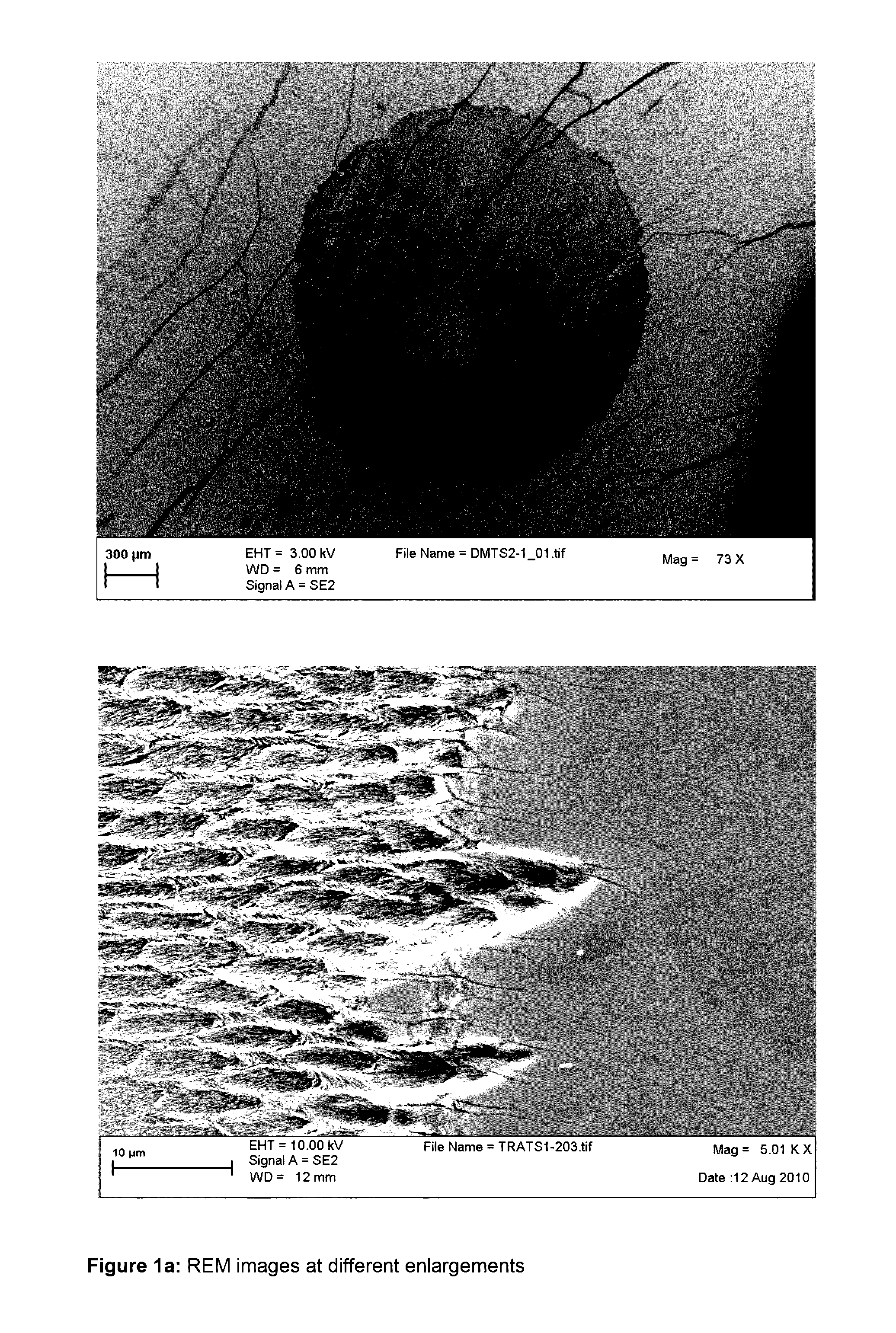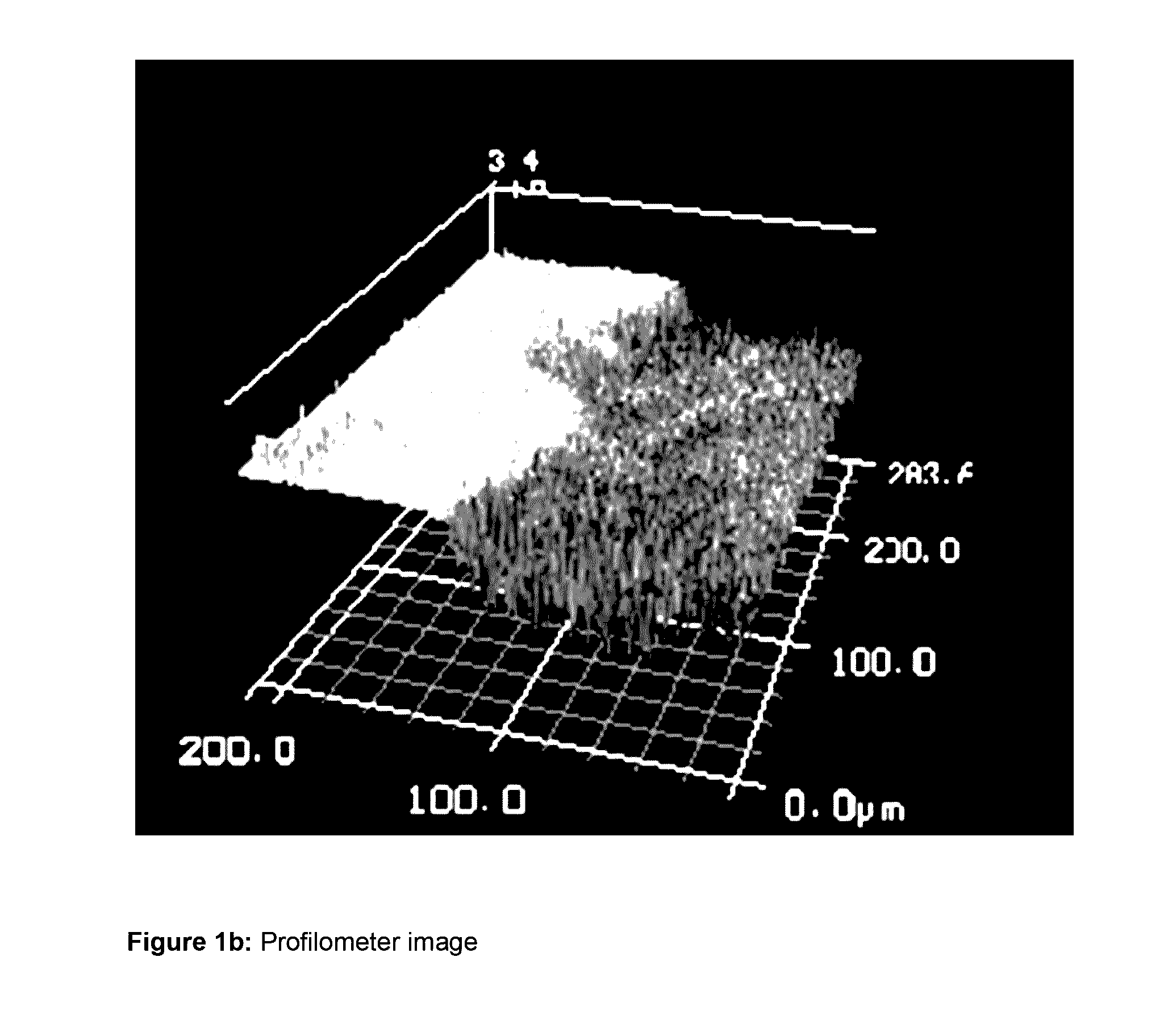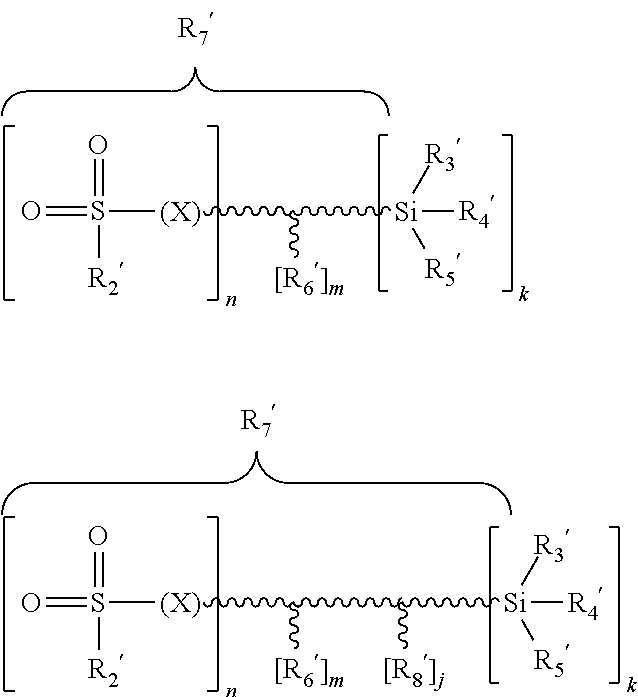Compounds containing (meth)acrylate groups and sulfonate or sulfate groups, polymers and condensates therefrom and use of the polymers and condensates
a technology of acrylate groups and sulfonates, which is applied in the field of compound containing (meth) acrylate groups and sulfonate or sulfate groups, polymers and condensates therefrom, and use of polymers and condensates, can solve the problems of insufficient etching effect, still considerable deficits of dental adhesives, etc., and achieve good etching effect
- Summary
- Abstract
- Description
- Claims
- Application Information
AI Technical Summary
Benefits of technology
Problems solved by technology
Method used
Image
Examples
Embodiment Construction
[0126]Below, preparation methods for the above reactions are provided in an exemplary way.
[0127]Reaction 1:
[0128]Stage 1: 5.11 g (0.024 mol) N-(2-aminoethyl)-3-aminopropyl methyldimethoxysilane was dissolved in 5.21 g triethylamine and 30 ml toluene and was cooled to 0° C. Afterwards, 5.0 ml (0.051 mol) methacrylic acid chloride in 30 ml toluene were added dropwise. The reaction mixture was stirred for 3 h at room temperature. The mixture was centrifuged and the obtained solution adjusted for hydrolysis and condensation with 1 N hydrochloric acid to pH 1-2. After 24 h the volatile components were removed under vacuum.
[0129]Stage 2: 3.92 g (0.013 mol) of the product of stage 1 were dissolved in 30 ml ethanol, the solution adjusted with sodium hydroxide to pH 10, and heated to 60° C. Afterwards 1.93 g (0.015 mol) sodium 2-mercaptoethansulfonate dissolved in 40 ml H2O were added dropwise, followed by stirring for 4 h. Ethanol was removed under vacuum and the aqueous solution treated wi...
PUM
| Property | Measurement | Unit |
|---|---|---|
| adhesion | aaaaa | aaaaa |
| biocompatibility | aaaaa | aaaaa |
| acidic | aaaaa | aaaaa |
Abstract
Description
Claims
Application Information
 Login to View More
Login to View More - R&D
- Intellectual Property
- Life Sciences
- Materials
- Tech Scout
- Unparalleled Data Quality
- Higher Quality Content
- 60% Fewer Hallucinations
Browse by: Latest US Patents, China's latest patents, Technical Efficacy Thesaurus, Application Domain, Technology Topic, Popular Technical Reports.
© 2025 PatSnap. All rights reserved.Legal|Privacy policy|Modern Slavery Act Transparency Statement|Sitemap|About US| Contact US: help@patsnap.com



